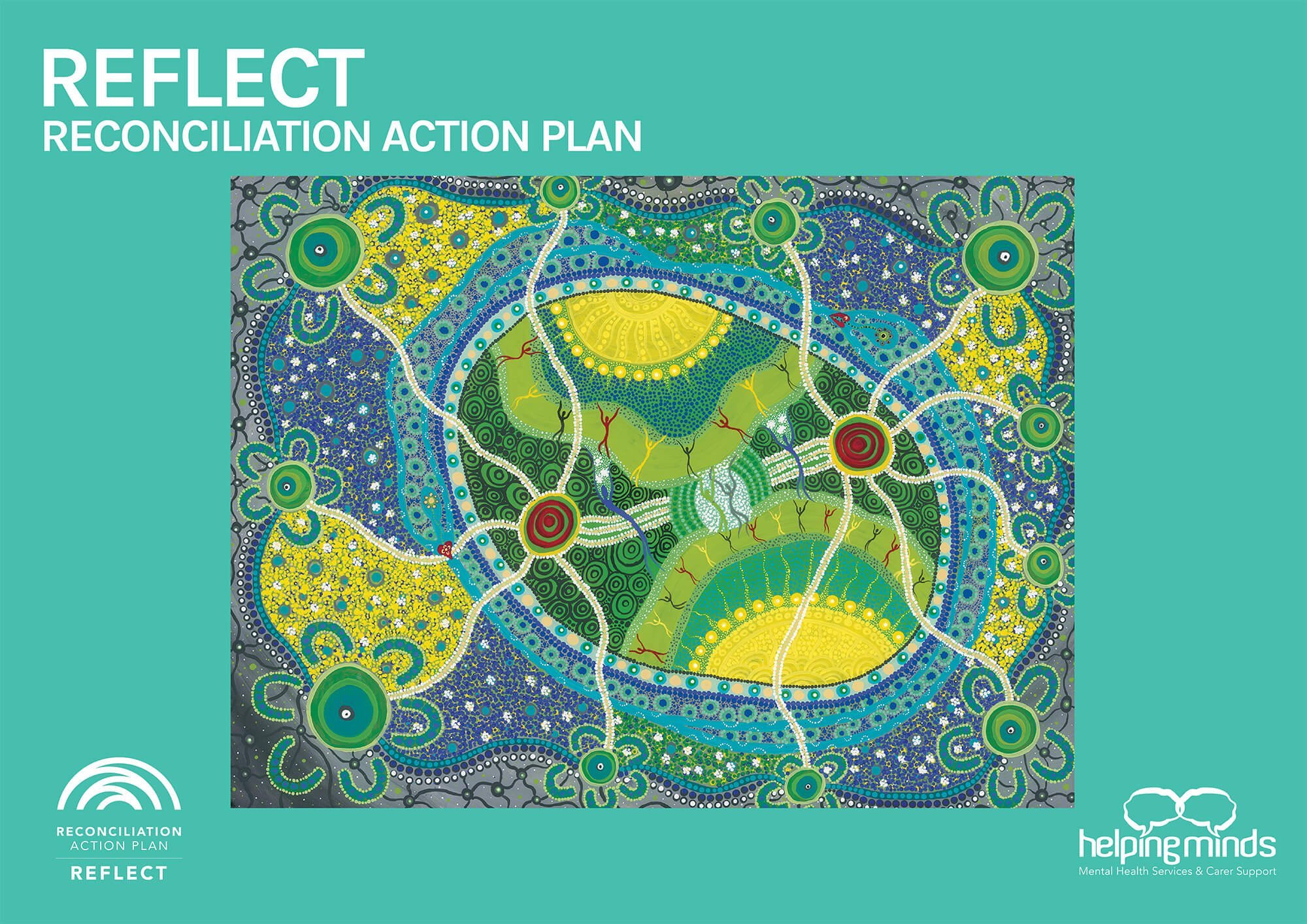Our reconciliation journey
HelpingMinds® works with many Aboriginal and Torres Strait Islander families and would like to strengthen those relationships with confidence that we are working in a respectful, inclusive and effective manner and that we are being open to learning new ways of working that benefit our clients, our partners and our staff. Our reconciliation journey to date has been driven by many staff who are committed to supporting a positive means of engagement with Aboriginal and Torres Strait Islander clients. Over a number of years, HelpingMinds® initiated and participated in events that brought together Aboriginal and Torres Strait Islander peoples and non-Aboriginal people in public events to overcome stigma towards people with mental health issues.
Acknowledgement
Our programs were redesigned in acknowledgement of the needs of the Aboriginal and Torres Strait Islander peoples who were the main participants. However, we lacked a formal structure to pursue our reconciliation goals. To formalise our reconciliation journey, HelpingMinds’ Board requested a Reconciliation Action Plan to be developed that is holistic, positive and directed towards internal organisational and cultural change as well as achieving positive changes in the community. To assist with this, HelpingMinds’ CEO allocated the role of developing a RAP to a senior member of staff who has responsibility for systemic change.
Our Reflect RAP
Based on feedback from our staff, clients and partners, we have moved forward on a number of actions, which we see as setting our organisation on a path towards reconciliation. To commence the development of our Reconciliation Action Plan, an invitation was issued to all staff to join a RAP working group. Staff were also invited to put forward the names of individual Aboriginal and Torres Strait Islander people whom they currently work with, who might be interested in working alongside our organisation to provide input to the RAP. As a result, over a period of twelve months, a group of five staff, including Aboriginal and Torres Strait Islander staff, have provided input along the journey of developing the RAP.
Collaboration with the First People
Additionally, we have received invaluable support from Aboriginal and Torres Strait Islander staff from two partner organisations, a client who is an Aboriginal and Torres Strait Islander person and a former Board member who is an Aboriginal and Torres Strait Islander person. The RAP also includes suggestions received from all HelpingMinds® team members during our all staff development day and in response to an email sharing the final draft RAP. Our champions are our team members, our leadership team, our CEO and our Board.
About the artist and the artwork
Local Aboriginal artist and proud Badimia, Yamaji, Noongar woman, Nerolie Bynder Blurton, created this beautiful piece of artwork titled Good Healing Place. Nerolie has explained the story and the elements in the painting as follows:
The large oval shape represents HelpingMinds. It is shaped as a womb which gives life back to people, in a safe and trusting place.
The womb is the centre where healing begins. The people from HelpingMinds, the green and grey small spirits, are the good spirits. They reach the adults which are the red, black and yellow spirits above them. The smaller spirits are children coming from the ground, growing, reaching out to them as well as connecting.
The sun rising in the morning and the sun going down and setting in the evening are the signs of great hope always for the people.
